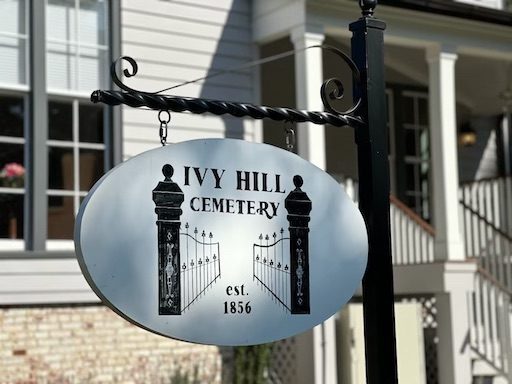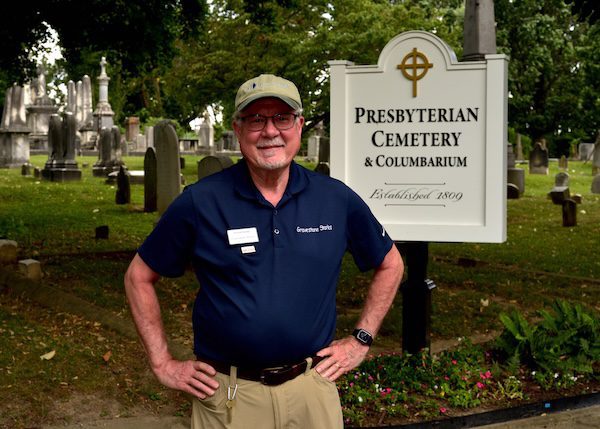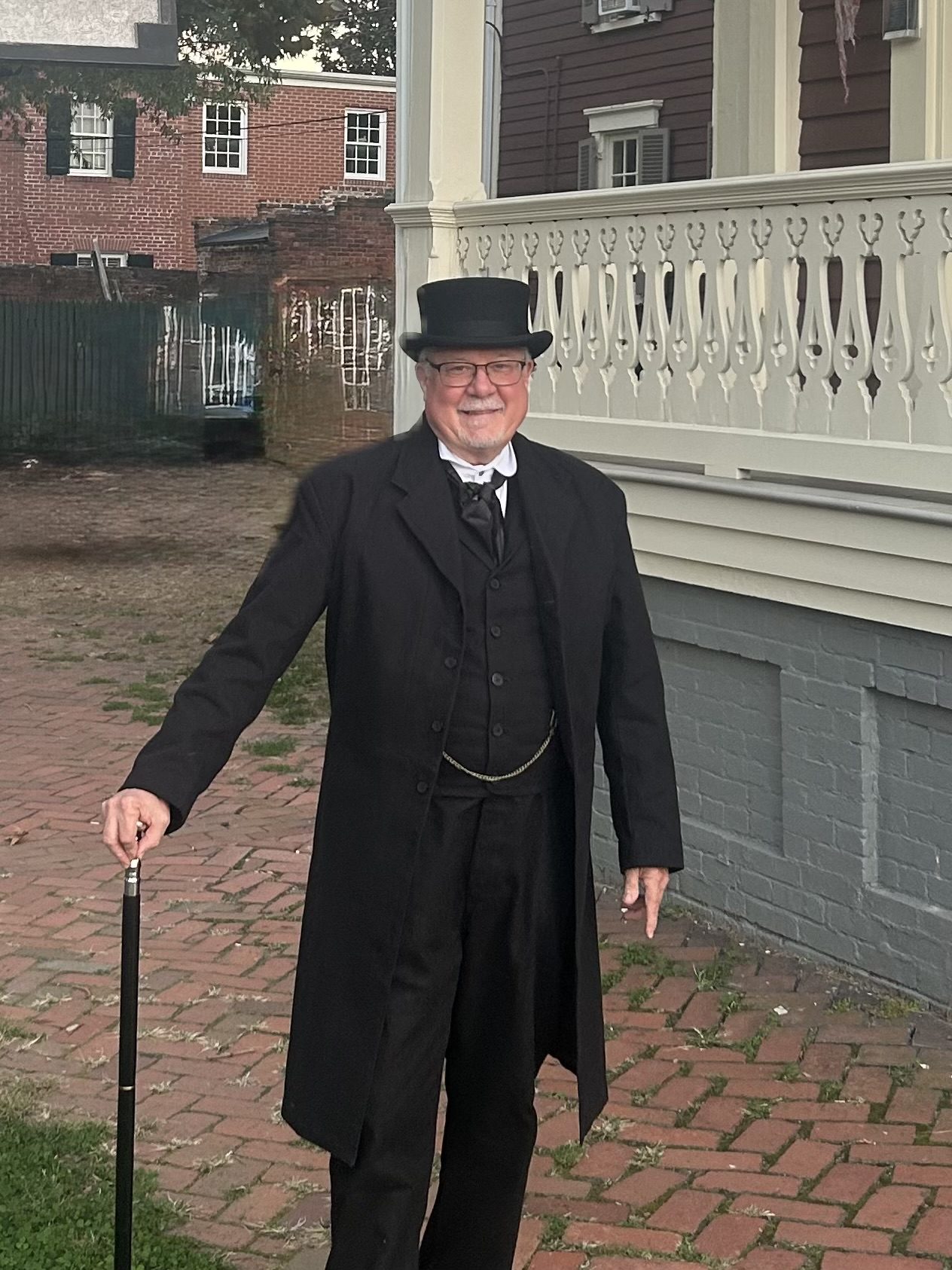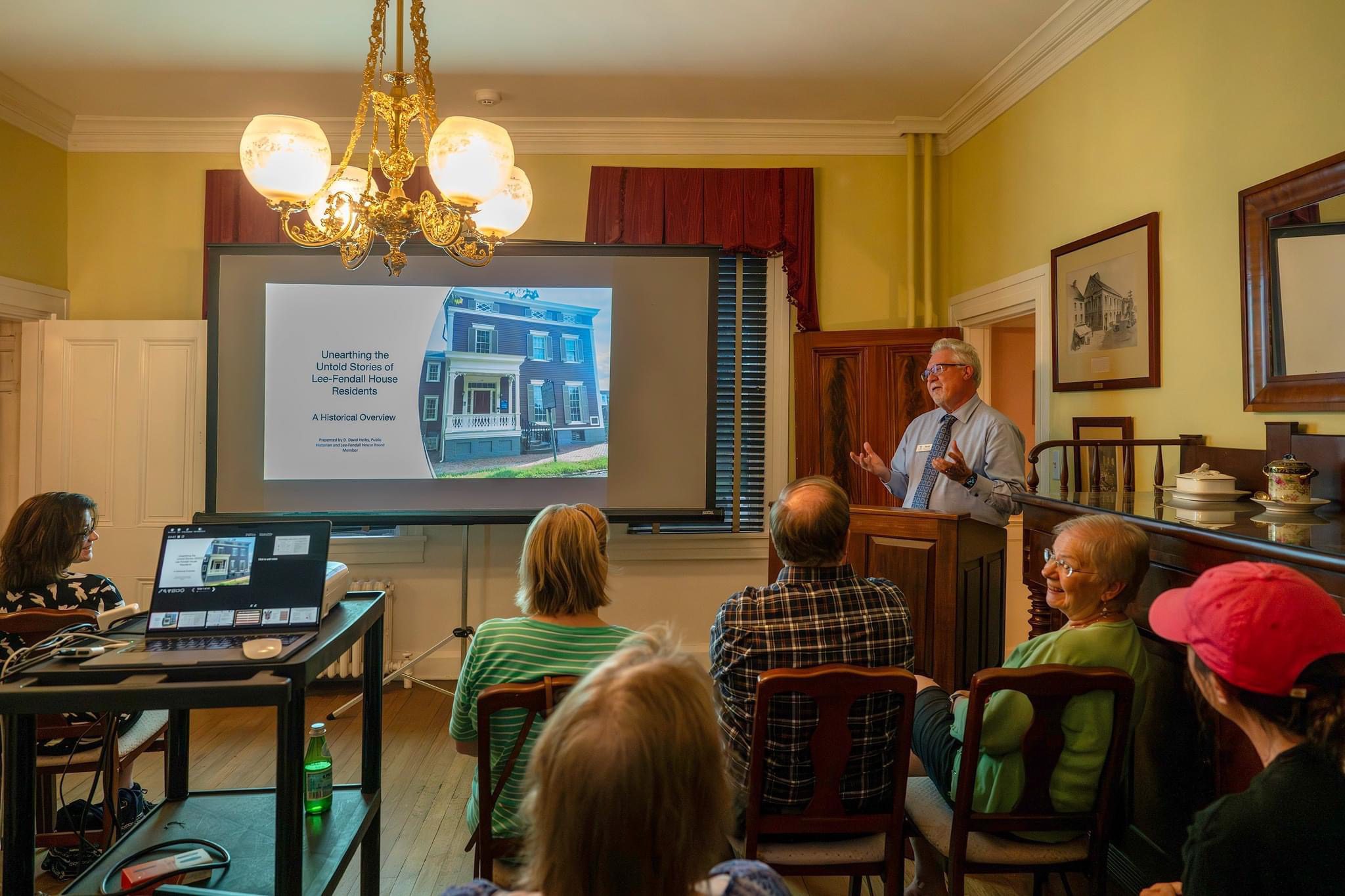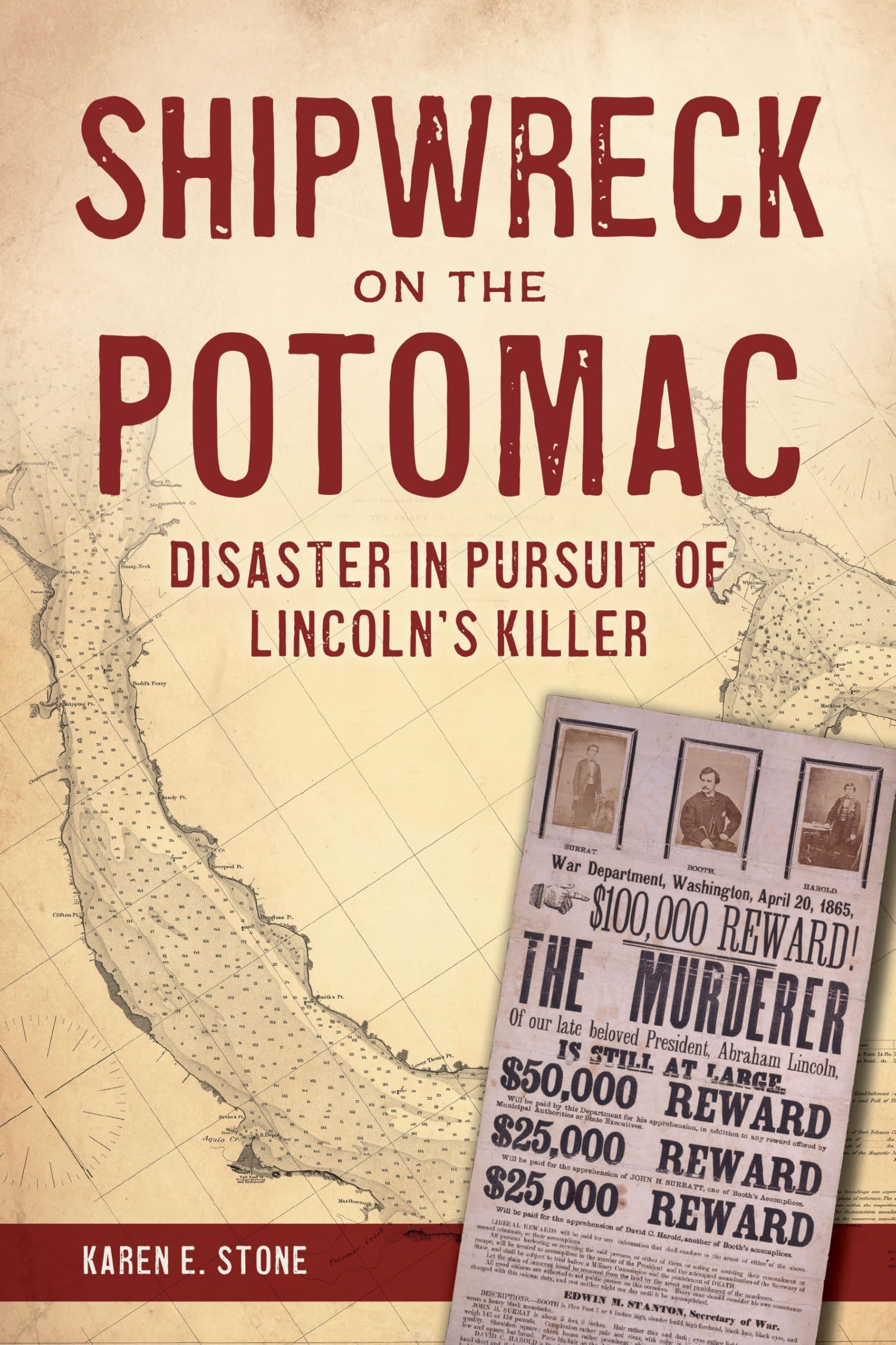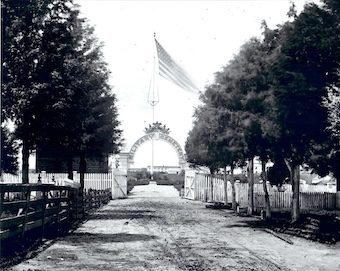Notable burials at Ivy Hill Cemetery in Alexandria, VA, include many of the city’s most distinguished residents, from political leaders and military officers to influential families.
Established in 1856, Ivy Hill Cemetery has been a final resting place for generations. Over time, development projects have led to the reinterment of several individuals, further enriching the cemetery’s historical significance.
Among these is Reverend Bryan Fairfax (1736–1802), buried initially at Mount Eagle. His remains were relocated to Ivy Hill in the late 1960s when construction disturbed his grave. Another notable reburial is Philip Richard Fendall I (1734–1805), first interred in his private family cemetery near Slaters Lane and Route 1. His unmarked plot at Ivy Hill also holds the remains of Elizabeth Steptoe Lee (d. 1789) and Mary “Mollie” Lee (d. 1827), both reburied here after their original gravesites were lost.
This growing list of notable burials at Ivy Hill Cemetery highlights individuals whose lives impacted Alexandria’s history. New names and stories are added regularly. If you know someone with a compelling story, contact Gravestone Stories to help preserve their legacy.
Ivy Hill Cemetery is located at 2823 King Street, Alexandria, VA 22302. Click here to view Ivy Hill Cemetery on the web.
B
Wernher von Braun (March 23, 1912 – June 16, 1977) Early American Space Exploration Pioneer
Wernher Magnus Maximilian Freiherr von Braun was an early pioneer of American space exploration. Born in a small town in the Kingdom of Prussia, von Braun’s family eventually moved to Berlin, where his father worked as a government official. Fascinated by space travel from a young age, von Braun obtained his doctorate in physics in 1934.
In 1939, while serving as the German army rocket program director, von Braun joined the Nazi Party. He later became a member of the SS and was awarded a rank equivalent to a Major. His work at the Army Research Center at Peenemünde was instrumental in developing Nazi Germany’s rocket program, including the V-2 missile used during World War II. Referred to as “vengeance weapons” and used under direct orders from Germany’s leader, Adolf Hitler, the V-2 guided missiles killed and wounded over 10,000 civilians and military personnel.

As Germany’s defeat loomed, von Braun and some of his fellow scientists managed to evade SS guards who had orders to execute them. They crossed Austria and surrendered to the Americans on May 2, 1945. The Americans had been actively searching for them to prevent their capture by the Russians.
Von Braun was subsequently brought to the United States as part of Operation Paperclip, a military operation that relocated over 1600 German scientists to New Mexico and Huntsville, Alabama. In the U.S., von Braun and his team played critical roles in the Cold War and the Space Race against the Soviet Union. They developed the Jupiter ballistic missile and the Redstone rocket, used in the first Mercury space missions.
Eventually joining NASA, von Braun spent over six years developing the Saturn I and Saturn V booster rockets to launch American astronauts to the Moon. Following more than two decades of service with NASA, he was awarded the Department of Defense’s Distinguished Civilian Service Award in 1969, the highest civilian award from the Department. Early in 1977, President Gerald Ford awarded him the National Medal of Science in Engineering, but von Braun was too ill with pancreatic cancer to attend the White House ceremony. His legacy as a critical figure in space exploration endures despite the controversial aspects of his earlier career.

He died on June 16, 1977, and is buried on Valley Road in Ivy Hill.
F
Philip Richard Fendall Sr.: A Legacy of Diplomacy, Love, and Enduring Ties in Revolutionary America
Philip Richard Fendall Sr., born in 1734, emerged from the prestigious Fendall family, closely linked to figures like Josias Fendall and Philip Lee. His life, characterized by service, diplomacy, and personal ventures, reflects a remarkable blend of public duty and private endeavors.
A variety of significant roles marked Fendall’s career. He served as the Clerk of Court for Charles County, demonstrating his commitment to public service. However, his most notable contribution came during the 1778 Treaty of Alliance negotiations. In this critical period, Fendall was crucial in supporting his cousin, Arthur Lee. Along with Benjamin Franklin and Silas Dean, Lee was instrumental in securing French assistance for the United States during the Revolutionary War against Britain. This assistance was vital in turning the tide in favor of the American colonies.
Despite his busy public life, Fendall also experienced a series of poignant moments in his personal life, particularly in his marital relationships. By 1780, Fendall had entered his second marriage with Elizabeth Steptoe Lee. Sadly, this union did not bear children, and Elizabeth passed away in 1789. Fendall found love again in 1791 when he married Mary “Mollie” Lee. This marriage was blessed with the birth of Philip Richard Fendall II in 1794, continuing the Fendall lineage.

1784 marked a significant turning point for Fendall beyond his professional and personal life. In this year, he acquired land in Alexandria, Virginia. A year later, the construction of the Lee-Fendall House commenced. This iconic building represented Fendall’s deep ties with the city and symbolized his enduring connection with the Lee family.
Philip Richard Fendall Sr.’s life was a tapestry of dedication to his country, love for his family, and a lasting legacy in Alexandria. To read more about Philip Richard Fendall and the fascinating story of his reburial in Ivy Hill, dive into this blog, which is presented in Part 1 and Part 11.
Anne S. Frobel (1816–1907)
Anne S. Frobel and her sister Elizabeth lived at their family home, Wilton Hill, on Franconia Road during the Civil War. Their 112-acre property included a farmhouse, a large barn, a well, and several outbuildings. However, the war brought turmoil to their once peaceful homestead. Union troops frequently raided Wilton Hill, seizing livestock, cutting down trees for firewood, and tearing down fences, adding to the sisters’ hardships.
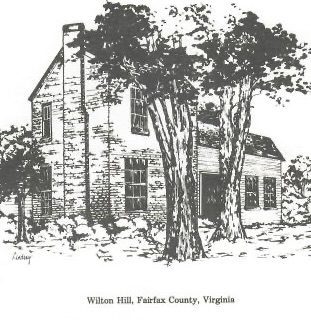
Anne kept a detailed diary during the war, offering a vivid firsthand account of daily life under Union occupation, the challenges of farming during the conflict, and the constant struggles she and her sister endured. Her writings remain a vital historical record of civilian experiences during the Civil War.
The Frobel Family’s Mount Vernon Connections
The Frobel family had deep ties to Mount Vernon. Anne’s father, John Jacob Frobel (February 20, 1772 – August 9, 1851), was a talented musician born in Amsterdam, Netherlands. He met George and Martha Washington in 1789 as a young performer in New York City. Impressed with his musical abilities, the Washingtons encouraged him to move to Mount Vernon, where, in 1804, he became a music instructor for the nieces and nephews of Judge Bushrod Washington.
Beyond his role as a musician, John Jacob Frobel had a passion for horticulture. He cultivated a Camellia Japonica variety, naming it ‘Judge Bushrod Washington’ in honor of his friend.
In 1849, John Jacob Frobel donated land near Wilton Hill to construct Sharon Chapel, now All Saints Sharon Chapel Church, which remains an active Episcopal congregation. While the original chapel has since been replaced, the land and graveyard are a testament to the Frobel family’s legacy.
John Jacob Frobel passed away on August 9, 1851, though his gravestone incorrectly lists 1846 as the year of his death. As a result, sources such as Find-A-Grave, which rely on gravestone inscriptions, also reflect this incorrect date. He is buried in section M, lot 7, site 4, at Ivy Hill Cemetery in Alexandria, Virginia.
Anne Frobel passed away on April 16, 1907, at 95. She is buried in the Frobel-Mower Plot, section M at Ivy Hill Cemetery.
G
James Green (1801 – 1880)
James Green, an English immigrant who arrived in the United States with his father in 1817, experienced a remarkable transformation in his professional life. Initially a cabinetmaker, Green shifted his career to become a distinguished hotel proprietor. In 1848, he acquired the Old Bank Building at Fairfax and Cameron Streets, which he expanded into the renowned Green Mansion House, Alexandria’s largest hotel. This expansion temporarily blocked the view of the historic Carlyle House. During the Civil War, the Green Mansion House was converted into a hospital, and his furniture factory was repurposed as a prison. Green navigated these challenging times adeptly, maintaining cordial relationships with military officers and refraining from taking the Oath of Allegiance. His extraordinary life journey ended with his death in 1880.
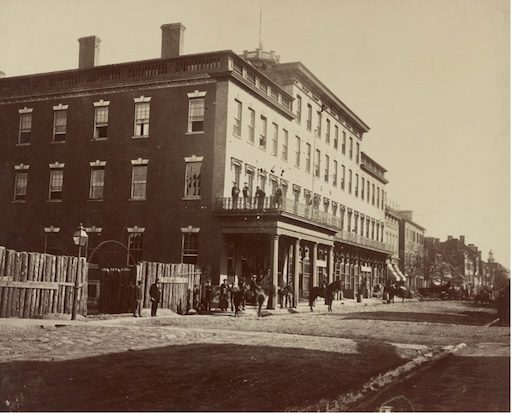
On January 18, 1827, a catastrophic event known as Alexandria’s Great Fire engulfed the Green Furniture Factory. The fire broke out in its warehouse on Royal Street while the workers were on a breakfast break. Founded by William Green and his son James, who immigrated from England in 1818, the business moved from King Street to Royal Street under James’s leadership in 1824. The factory, which later became a prison during the Civil War, was passed down to James’s three sons and ceased operations in the 1880s. This family also owned the Mansion House, now a residential building on the corner of Prince and Fairfax Streets. During Alexandria’s tenure as part of the District of Columbia, the fire caused extensive damage, leading to a significant community and regional response.
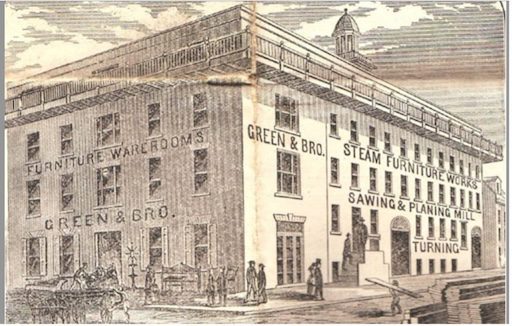
The Great Fire profoundly impacted the community, resulting in the loss of numerous homes and properties. On Fairfax Street, the blaze consumed the homes of the Wise, Green, and Stabler families. Additionally, warehouses owned by Lloyd, Miller, and Masterson were destroyed. On Prince Street, houses and warehouses belonging to the Vowell, Fitzhugh, Fowle, and Smoot families were lost to the flames. These losses underscore the widespread devastation caused by the fire.
The collective efforts of communities, including over 300 Navy Yard Employees and other individuals, including enslaved laborers like Michael Shiner from the Navy Yard, were crucial in combating the fire. Alexandria’s fire companies were the first responders before help arrived from neighboring areas. A post-fire assessment revealed the loss of 53 buildings, including homes and warehouses, valued at over $107,000. The City Council allocated funds for repairing fire engines, and donations for relief efforts poured in from various sources, including Congress, which appropriated $20,000 for the victims. While not as widely known as other historical fires, Alexandria’s Great Fire, originating from the Green Furniture Factory, stands as a testament to the resilience and cooperation of communities in the face of disaster.
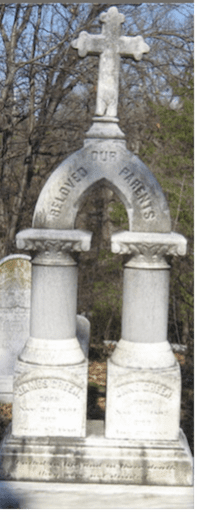
Charles Goodman (1906 – 1992)
Charles Goodman, born in 1906 in New York, earned his degree from the Armour Institute of Technology in Chicago. In 1934, he relocated to Washington, DC, joining the Public Buildings Administration. Collaborating with Robert C. Davenport, Goodman played a pivotal role in designing and site planning most of Hollin Hills, encompassing more than 14 model homes. Unlike the prevailing Colonial Revival architecture of the era, these homes stood out for their affordability, abundant natural light, and open floor plans seamlessly integrated with the surrounding landscape.
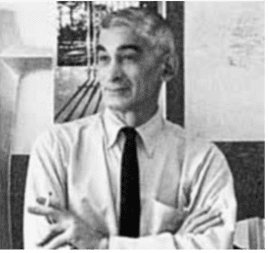
In 1941, he also designed the original terminal at the National Airport. Among his notable projects in the region, he contributed to the 1964 Unitarian Church in Arlington and the construction of Goodman House in 1954. Beyond the District, Goodman left his mark on Maryland with his designs gracing Silver Spring and Takoma Park; these structures now hold places of honor on the National Register of Historic Places.
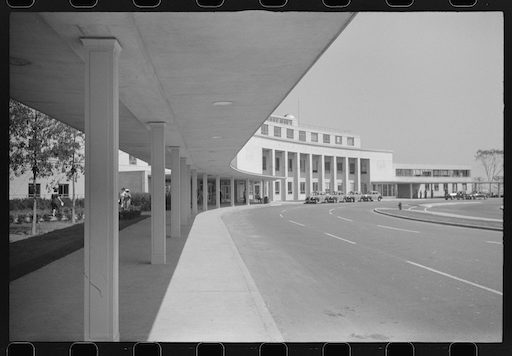
Goodman’s influence extended to federal projects, including Post Offices in Chicago, Kentucky, New York, Ohio, Kansas, and Michigan. Regrettably, he passed away in 1992, leaving a legacy of innovative architectural achievements.
H
Constance Cary Harrison (1843-1920)
Constance experienced a significant upheaval as the Civil War erupted. The Cary family left their estate, Vaucluse, in Alexandria at the war’s outset. The estate was eventually destroyed, compelling the family to relocate to Richmond. In this tumultuous period, Constance’s mother initiated a hospital where she and Constance devoted themselves to caring for wounded soldiers, even writing letters on their behalf to send home.
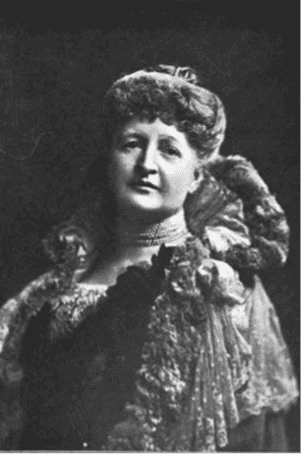
Despite the demanding responsibilities of nursing and letter-writing, Constance managed to carve out time to contribute articles and short stories to Richmond newspapers. Employing the pen name “Refugitta,” she garnered recognition for her writing, establishing herself as a respected author. The Civil War exacted a heavy toll on Constance Cary Harrison, causing the destruction of her cherished home, upending her way of life, and subjecting her to a brief period of imprisonment as a War prisoner due to her involvement in running a blockade.
Remarkably, Constance remained steadfastly focused on a cause that emerged as a positive outcome of the War: the abolition of slavery. This commitment drove her efforts to champion this cause through her writing. Interestingly, her husband, Burton Harrison, had previously served as the secretary to Jefferson Davis, the president of the Confederacy. However, Constance and Burton’s union occurred after the War’s conclusion. The couple resided in various locations, including New York City and Bar Harbor, Maine, as they navigated their married life together.
L
Richard Bland Lee (1797-1875)
Born on July 20, 1797, at Sully Plantation in Fairfax County, Virginia, Richard Bland Lee embarked on a long and distinguished military career. He entered the U.S. Military Academy at West Point in 1814 and graduated in 1817, commissioned as a 3rd Lieutenant in the Corps of Artillery. His early service included garrison, ordnance, and commissary duties at posts across the expanding nation.

On November 23, 1826, he married Julia Anna Marion Prosser at White Marsh in Gloucester County, Virginia. Together they raised a large family of twelve children, though three died in infancy. Their surviving children included Mary Elizabeth, Julia Eustis, Evelina Prosser, Richard Bland III, Anna Cornelia, Julian Prosser, Myra Gaines, William Augustus, and Robert Fleming.
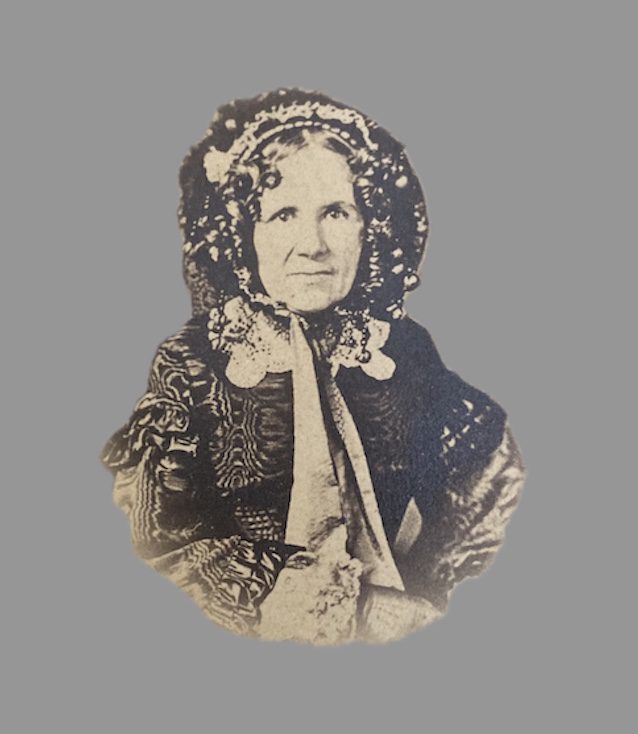
Lee saw active duty in multiple theaters. In 1833 he traveled the Santa Fe Trail, and three years later was twice wounded during a skirmish near Micanopy in the Second Seminole War in Florida. He later served with distinction during the Mexican-American War, and from 1849 to 1859 held postings across the Pacific frontier—including California, Oregon, and Washington—based primarily out of Jefferson Barracks in St. Louis. By 1841 he had risen to the rank of Major in the Commissariat of Subsistence.
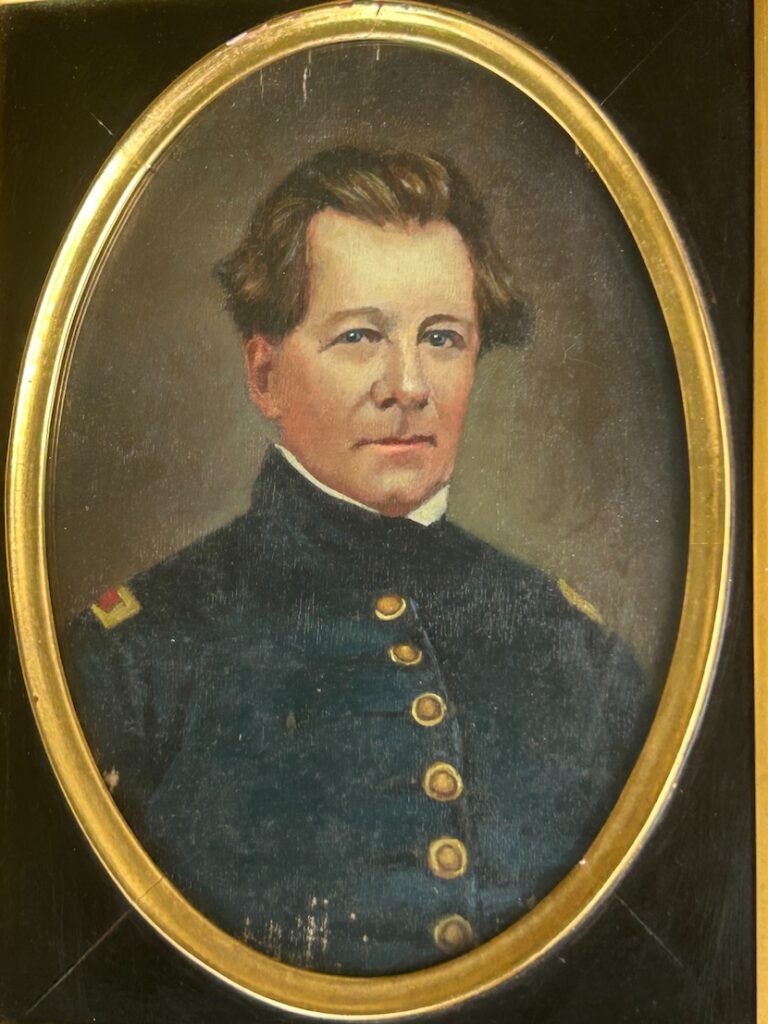
When the Civil War broke out, Lee resigned his U.S. commission and cast his lot with the Confederacy, serving as quartermaster.
After more than four decades in uniform, he retired to Alexandria, Virginia, where he died on August 2, 1875, at the age of 76.
He is buried in Section N, lot 153, plot 1.
Rev. Thomas E. Locke (1812-1897)
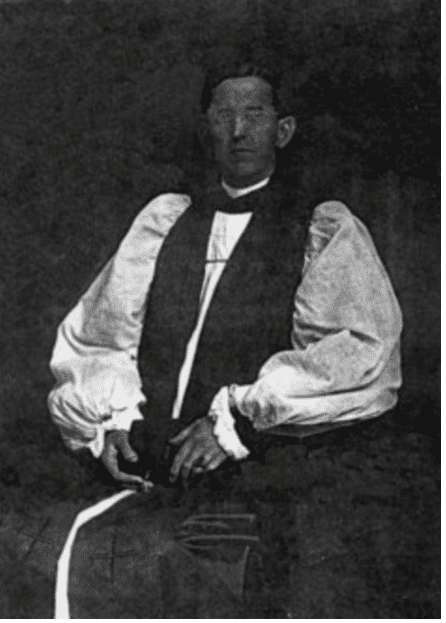
Rev. Locke completed his studies at Virginia Theological Seminary in 1837, receiving ordination as a deacon that same year, followed by priestly ordination in 1838. Serving as a dedicated minister for nearly six decades, he held a prominent role within the clergy. As his life journey ended, he held the distinction of being both the oldest clergyman in the diocese and the sole surviving member from his Seminary graduating class.
S
Dolly Genevieve Shepperson (1880-1970)
Dolly holds the distinction of being the pioneer woman to register for voting in Alexandria back in 1920. Despite encountering initial setbacks, she displayed remarkable determination by running for City Council on two occasions: first in 1930 and subsequently in 1934. Her notable career at the Washington Post spanned from 1905 to 1943, during which she served as the newspaper’s inaugural society columnist. Interestingly, throughout the initial 15 years of her tenure, she never set foot inside the Post Building. Instead, her column was delivered by her brother, an Alexandrian news reporter, reflecting the era’s societal norms that discouraged young women from entering certain places. She maintained memberships in various esteemed organizations, including Christ Episcopal Church, the Alexandria Business and Professional Women’s Club—later named in her honor—the United Daughters of the Confederacy, the American Newspaper Women’s Club, and the American Legion Auxiliary to Post 24.
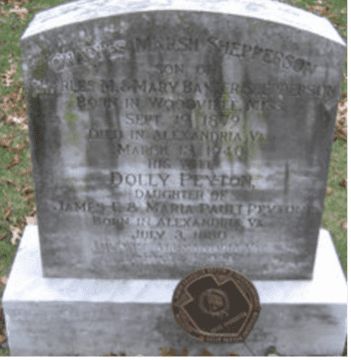
Benjamin Franklin Stringfellow (1840-1913)
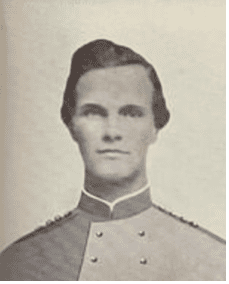
Benjamin Franklin Stringfellow, often referred to as Frank, had a small stature, standing only five feet eight inches tall and weighing 94 pounds, yet he became a legendary figure in the Civil War. Born in Alexandria, he attended Episcopal High School before teaching in Mississippi. Eager to participate in the Civil War, Stringfellow returned to Virginia but initially faced rejection from multiple units due to his size. He eventually joined the Confederate 4th Virginia Cavalry as a Captain and became the personal scout for General J.E.B. Stuart, undertaking multiple missions into Union territory. His dangerous exploits earned him a reputation as one of the most feared men in the Confederacy, with a substantial $10,000 reward offered for his capture. Stringfellow also rode with Colonel John Singleton Mosby’s 43rd Virginia Cavalry and served as a confidential scout for General Robert E. Lee.
During the war, Stringfellow disguised himself as a dental assistant in Alexandria to gather intelligence and later obtained a dental license to continue his espionage in Washington, D.C. Contrary to the portrayal in the PBS drama “Mercy Street,” he was not involved in any assassination attempts on President Abraham Lincoln.
After the war, Stringfellow refused to take the loyalty oath and fled to Canada. He returned to Alexandria in 1867, enrolled in the Virginia Theological Seminary, and married his longtime sweetheart Emma Green, whose family owned the Mansion Hotel in Alexandria and the Green furniture factory. He was ordained as an Episcopal priest in 1876, serving in various Virginia parishes and as the first chaplain of the Woodberry School in Madison. Stringfellow reenlisted as a Chaplain in the Spanish-American War in 1898, demonstrating his ongoing commitment to service.
Frank Stringfellow passed away in 1913 due to a heart attack in Alexandria, where he retired. He is buried beside his wife Emma at Ivy Hill Cemetery.
T
Nicholas Trist: The Diplomat Who Shaped America’s Southwest Borders
Nicholas Trist is not a household name in American history, but his contributions as a diplomat during a crucial period in U.S. history are remarkable. Born on June 2, 1800, in Charlottesville, Virginia, Trist’s journey would eventually lead him to the center stage of one of the most significant conflicts of his time—the Mexican-American War.
You can read more about him at this [blog].
W
Edgar Warfield Sr. (1842-1934)
Edgar Warfield Sr. (1842-1934) began his career as a Druggist before the outbreak of the Civil War. On April 17, 1861, he enlisted in Company H of the 17th Virginia Infantry in Alexandria, VA. His service continued until April 9, 1865, when he surrendered at Appomattox Court House, VA. Notably, Warfield was designated to serve with the Regiment Apothecary in 1861. Warfield was the last surviving member among the over 700 men who departed Alexandria in May 1861 to join the Confederacy.
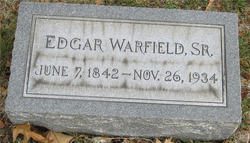
Y
William Yoast (1924-2019), Assistant Coach of the 1971 Alexandria City Champion football team, is memorialized in the movie “Remember the Titans.”
Herman Boone and Bill Yoast emerged as central figures during the 1971 football season at T.C. Williams High School, which has since become Alexandria City High School. This particular year marked a crucial period of integration, as it entailed amalgamating upper-grade students from two previously all-white Alexandria high schools with T.C. Williams. Yoast was the head football coach at the all-white Francis C. Hammond High School until that point. The original plan was for Yoast to assume leadership of the combined football team. However, the appointment of Herman Boone, T.C. Williams’ first African-American coach, as the head coach altered this trajectory. In a gracious move, Yoast accepted the role of assistant coach. As a result of Boone and Yoast’s collaboration, the team clinched a state title that season. Their efforts extended beyond the football field, as they were pivotal in nurturing racial harmony within the team and the wider community. This compelling tale of leadership, unity, and triumph over challenges later served as the basis for the 2000 Disney film, “Remember the Titans.”
Sources of Information
Friends of Fort Ward. (1992). The Civil War Diary of Anne S. Frobel of Wilton Hall in Virginia. EPM Publications, Inc.
Ivy Hill Cemetery. (n.d.). Welcome to Ivy Hill Cemetery. Retrieved from https://ivyhillcemetery.net
Kundahl, G. G. (2004). Alexandria goes to war: Beyond Robert E. Lee. The University of Tennessee Press.
Wallace, L. A., Jr. (1990). 17th Virginia Infantry. H. E. Howard, Inc.
Weinraub, C. (n.d.). The Great Fire of 1827. Unpublished manuscript.
Defining Your Home. (2008, December). Where have all the flowers gone? Retrieved from https://definingyourhome.blogspot.com/2008/12/where-have-all-flowers-gone.html
